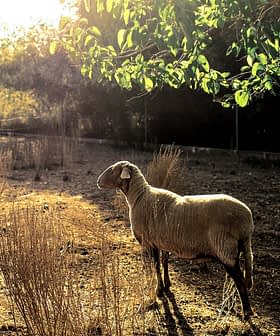Five years after California olive oil producers sponsored a study that found most imported olive oils tested failed to meet international standards, a group representing importers has issued two reports of its own.
This time, random tests found that 67 percent of California olive oils labeled as extra virgin fell short of the new quality standards developed by the Olive Oil Commission of California (OOCC) and recently adopted by the California Department of Food and Agriculture.
The North American Olive Oil Association (NAOOA), a trade group representing bottlers and distributors of imported olive oil, commissioned the reports to raise questions about the new California standards, which it says were hastily developed to avoid potential opposition and legal challenges.
The first report, The Olive Oil Commission of California’s 2014 Grade and Labeling Standards: Analysis & Implications, prepared by a former U.S. chief agricultural negotiator, Islam A. Siddiqui, blasted the new California rules as being devised to gain a competitive edge, saying, “It is expected to benefit large-scale (California) producers/handlers, who have been behind this effort, to differentiate their product from other olive oils, especially those imported from other countries.”
Noting that approximately 600 out of the 700 olive oil producers in California produce less than 5,000 gallons and are therefore exempt from the new rules, the report argued, “It is ironic that the OOCC standard regulates only a portion of olive oil produced in California and exempts imported olive oil produced in other states and countries. It raises serious questions about the real intent behind the OOCC enabling legislation and the rush to implement it in record time.”
To illustrate its objections to the OOCC standards, their effectiveness and the motivations behind them, a separate report the NAOOA released today presented the results of random testing of 18 California extra virgin olive oils bought from store shelves. The study found two-thirds of the samples failed at least one chemical measure of the new OOCC rules.
“The cornerstones of the new OOCC standards for freshness and purity, the PPP and DAGs tests, appear to have created a significant hurdle for California producers to meet with off-the-shelf samples, accounting for 44 percent of the OOCC 67 percent failure rate,” the report stated.
In a statement, NAOOA executive vice president Eryn Balch said, “The results raise significant questions about the validity of the OOCC standards and confirm the new tests incorporated in the standards are not reliable.”
In July, 2010 the University of California at Davis Olive Center released a landmark study that found 69 percent of imported olive oils bought in several California supermarkets failed to meet the International Olive Council standards for the grade.
The Davis report has been cited ever since, often inaccurately, to depict rampant fraud in the olive oil industry and as part of an ongoing campaign by American producers to chip away at the longstanding market dominance held by imported brands.
In contrast to the 2010 UC Davis report, the report released today did not mention the brand names of the samples tested.








